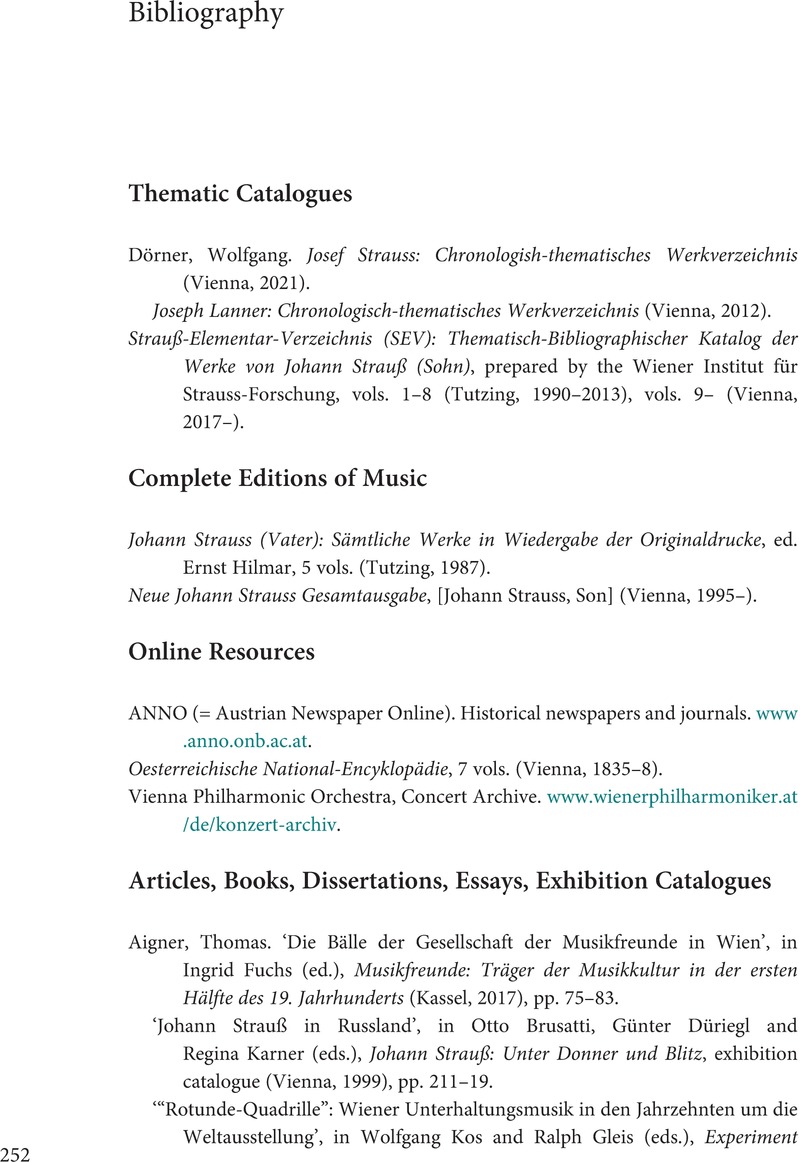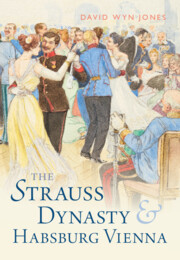Book contents
- The Strauss Dynasty and Habsburg Vienna
- Frontispiece
- The Strauss Dynasty and Habsburg Vienna
- Copyright page
- Dedication
- Contents
- Figures
- Boxes
- Preface
- Eingang
- 1 1804–1832. Johann Strauss and the Making of a Tradition
- 2 1833–1849. Father and Son: Travel and Revolution
- 3 1850–1870. Three Brothers: Johann, Josef and Eduard
- 4 Dance and March: Music and Culture
- 5 1871–1899. Two Brothers: Johann and Eduard
- 6 Staging Comedy: Operetta and Opera
- 7 1900–1916. One Brother: Eduard
- Appendix: Strauss Family Tree
- Bibliography
- Index of Works by Johann Strauss (Father), Johann Strauss (Son), Josef Strauss and Eduard Strauss
- General Index
- Plate Section (PDF Only)
- References
Bibliography
Published online by Cambridge University Press: 09 June 2023
- The Strauss Dynasty and Habsburg Vienna
- Frontispiece
- The Strauss Dynasty and Habsburg Vienna
- Copyright page
- Dedication
- Contents
- Figures
- Boxes
- Preface
- Eingang
- 1 1804–1832. Johann Strauss and the Making of a Tradition
- 2 1833–1849. Father and Son: Travel and Revolution
- 3 1850–1870. Three Brothers: Johann, Josef and Eduard
- 4 Dance and March: Music and Culture
- 5 1871–1899. Two Brothers: Johann and Eduard
- 6 Staging Comedy: Operetta and Opera
- 7 1900–1916. One Brother: Eduard
- Appendix: Strauss Family Tree
- Bibliography
- Index of Works by Johann Strauss (Father), Johann Strauss (Son), Josef Strauss and Eduard Strauss
- General Index
- Plate Section (PDF Only)
- References
Summary

- Type
- Chapter
- Information
- The Strauss Dynasty and Habsburg Vienna , pp. 252 - 260Publisher: Cambridge University PressPrint publication year: 2023



